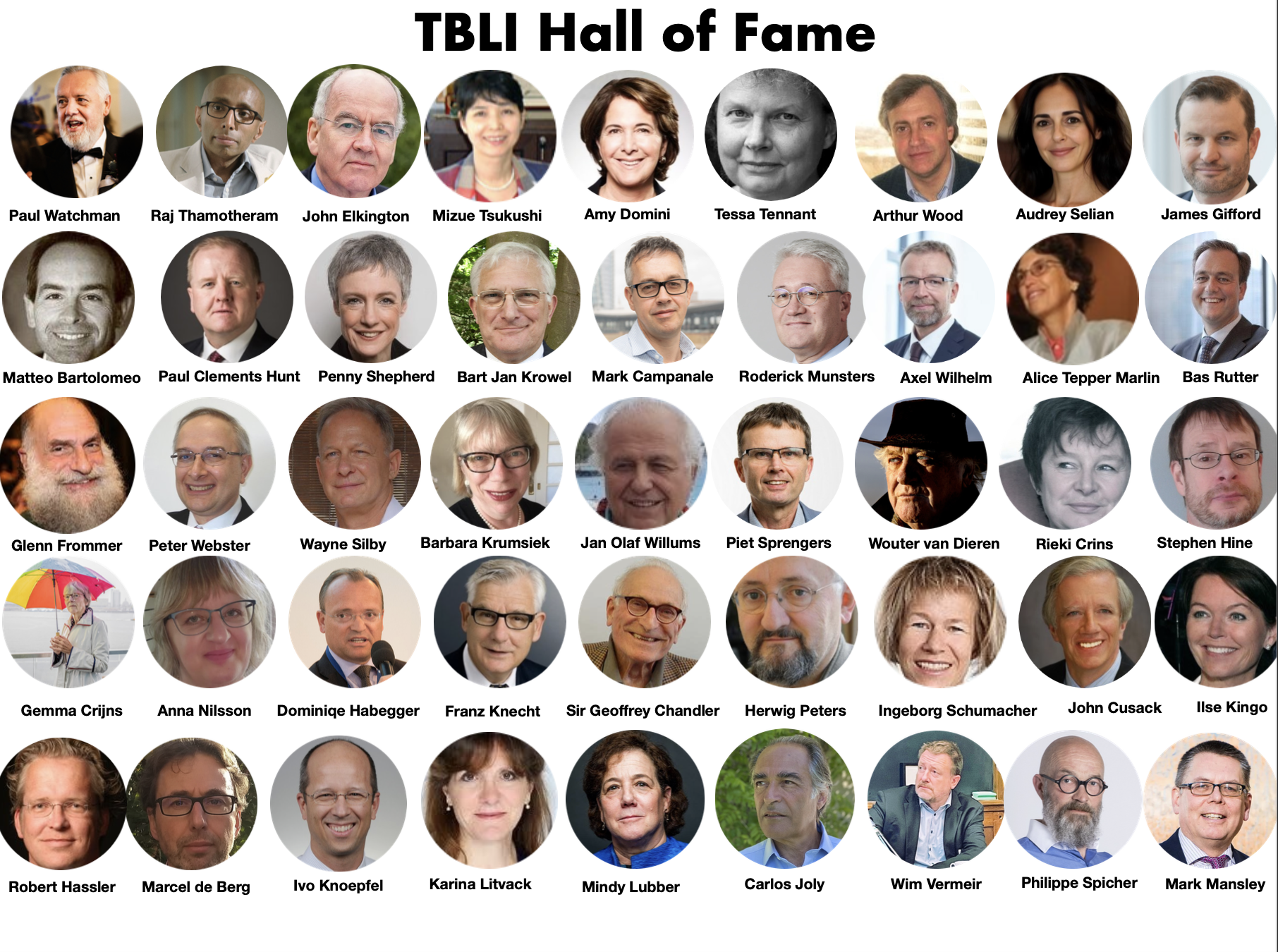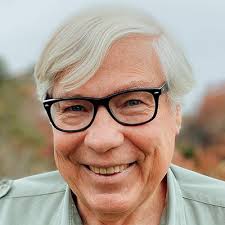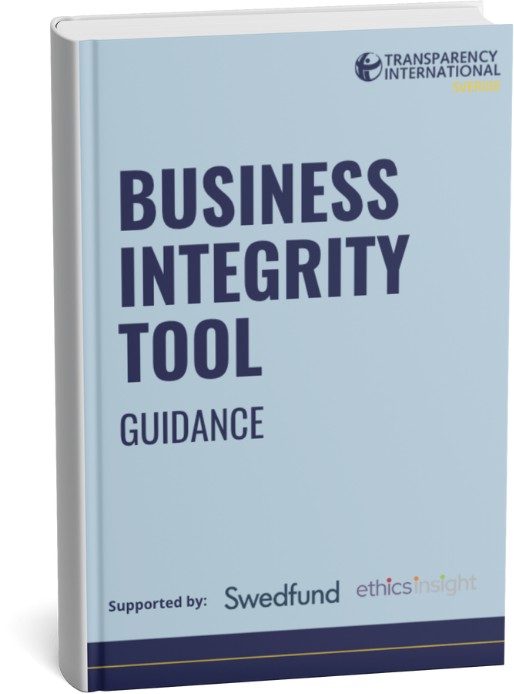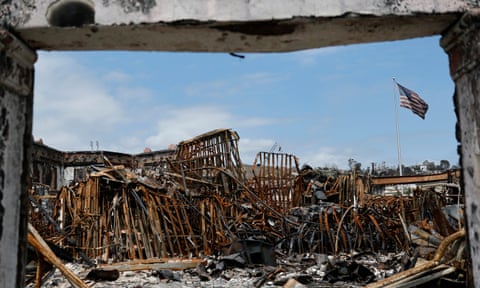
Your weekly guide to Sustainable Investment
TBLI Capital Connect Client Highlight:
Nilus

Meet Nilus, a social impact company tackling urban food insecurity across Latin America. By leveraging technology and community group buying, Nilus sources surplus and near-expiry food to deliver affordable, nutritious groceries to low-income neighborhoods in cities like Buenos Aires and Mexico City.
Their model reduces food waste while making healthy food accessible to those who need it most.
Contact TBLI Capital Connect for more details on Épopée. robert@tbliadvisorygroup.com
Are you interested in engaging TBLI for our Capital Connect services? Book a call here
TBLI Hall of fame

The list includes those who helped build the ecosystem for ESG and Impact Investing along with TBLI, starting over 25 years ago
View the full hall of fame
TBLI Radical Truth Podcast
True Wealth Master Class /w Jim Rutt

Jim Rutt is a technologist, thinker, and host of The Jim Rutt Show podcast, where he explores deep ideas at the intersection of science, technology, and society. He is the Executive Producer of the film An Initiation to Game~B and a leading voice in the Game B movement—a vision for a post-Game A world that prioritizes sustainability, human flourishing, and collaborative evolution.
Jim is a co-founder and Past President of the MIT Free Speech Alliance, and the creator of the popular mobile strategy game Network Wars. He served as Chairman of the Santa Fe Institute and continues his affiliation as a Research Fellow, focusing on consciousness and evolutionary artificial intelligence. He also sits on the advisory boards of the Krasnow Institute and Virginia Tech’s Fralin Life Sciences Institute.
What Will You Learn?
-
Rethink the Current System: Identify its flaws, blind spots, and unsustainability.
-
Imagine a Thriving Future: Explore models designed for collective well-being and long-term resilience.
-
Build Practical Strategies: Understand how to transition from "here" to "there"—and your role in that journey.
Upcoming TBLI Virtual mixers
Finance isn’t broken—it’s just misaligned. Realign it with us.
Support TBLI→ tbli.org
Business Integrity Guidance: Now With 100% More Swedish, and at Least 50% Less Existential Dread

Remember when due diligence involved relying on them having auditors (like Enron and Wirecard) and policies (or not, like FTX) and then moving on to the next PPT slide, titled "Growth forecast"? It turns out that “trust but verify” doesn’t mean “trust and then just hope for the best.” Who knew?
After nearly a year of collaboration with the forward-thinkers at Swedfund International and Transparency International Sverige, we give you the Business Integrity Tool, a practical, hands-on due diligence toolkit for impact investors who want to avoid that “Surprise! Your PortCo is under investigation” moment.
This isn’t just another compliance checklist. It’s a full-spectrum, sector-savvy, gap-spotting, action-planning, adaptable toolkit that helps you:
💡 Find integrity risks before they find you.
💡 Prioritise what matters.
💡 Build a real action plan.
And yes, it’s free because getting started on integrity risk management should be universally accessible.
What are you waiting for?
1️⃣ Download the tool (here https://www.transparency.se/business-integrity-tool).
2️⃣ Use it before you write another glowing investment memo.
3️⃣ Share it with your compliance team, investees, or key partners.
What if...?
“My organisation is too small/too busy/underresourced to need this!”
Sadly, corruption, fraud, and regulatory drama don’t care about your headcount or good intentions. This tool scales to fit from scrappy startups to the “we have a whole department for this” crowd. It's fully editable.
"I don't work in investment..."
The tool works for any critical partnership—from key distributors in healthcare to JV partners to EPC contractors in project finance (renewables, infrastructure, etc.).
Why now/your timing sucks (ethical investing is so 2024)?
Business integrity isn’t just for the big scandals or the annual ESG report. It’s about building better businesses, making smarter investments, and, bonus-preserving peace of mind.
I've done every type of integrity DD (background checks to board advisory) in the past 20 years, and even if you avoid the headline scandals, an investment with poor governance makes little commercial sense. I worked with a Nordic investor in Vietnam with eight (notionally) high-performing investments they couldn't exit. Why? The PortCo failed the acquiring investor's governance sniff test (family-business shenanigans, tax-dodging, fraud, mainly). Aside from ethics, improving PortCo governance makes business sense; it adds value. Despite the best efforts of some, there remains an Ethical Investment Alpha, a premium.
Source
The Sustainable City Summit VOL III
More info
Grasslands Are Some of Earth’s Most Underrated Ecosystems
Earth is home to a spectacular array of ecosystems, each with their own unique characteristics and benefits. Yet not all of them receive equal attention: Grasslands, for one, are often overlooked — despite their importance.
The world's grasslands are arguably the single most extensive land cover on Earth's ice-free land surface. Grasslands or "grassy ecosystems" — used here to encompass savannas, open shrubland and tundra — are also incredibly diverse. They range from the Great Plains of North American and the Pampas of South America to the Eurasian Steppes and East African savannas (such as the Serengeti and Maasai Mara).
These ecosystems are critical for a wide range of plants and animals and for mitigating climate change. They also offer sustenance, income, cultural identity and essential ecosystem services, such as pollination and water regulation, to populations around the globe. Over a billion people directly depend on grasslands for their food and livelihoods, many of them Indigenous groups and other local communities.
Yet despite all this, grasslands receive disproportionately little protection, funding and attention in global conservation and climate agendas. Only 4.6% of temperate grasslands are protected, compared to 18% of forests and around 16% of wetlands. And close to half of all grasslands may have already been converted to uses, such as agriculture or development. As a result, they are among the most at-risk biomes on Earth.
The good news is that a growing body of research is shedding light on grasslands' many benefits, making the case for increased investment and protection. Here are five key reasons why they deserve more attention:
1) Grasslands Play a Vital Role in Mitigating Climate Change
One of the most underrecognized benefits of grasslands is their vital role in mitigating climate change. Although they store less carbon per unit area than forests, the sheer expanse of grasslands globally means they are a major storehouse, accounting for up to 34% of the world's terrestrial carbon. Forests, by comparison, account for about 39%.
Ninety percent of this carbon is stored underground, where the diversity of grassland plants helps increase the amount of organic carbon stored in roots and soils. Because of this, and because many grasslands plants have deep and resilient root systems, their carbon stores may be more stable than those in forests, better able to withstand environmental stressors like drought and fires. When fires do sweep through, belowground carbon remains mostly intact. But carbon stored above ground is mostly lost when vegetation burns.
In fact, emerging research shows that a significant portion of grasslands' soil carbon is stored in deeper subsoil layers than are typically measured in the field. This means the amount they hold may be greater than currently estimated.
Various strategies could help grasslands store even more carbon. For example, silvopasture (deliberately integrating trees into pasturelands) has shown particular promise. In tropical regions, silvopasture consistently improves carbon sequestration — often in pastures with degraded soils or low existing productivity.
Grasslands also help regulate temperatures thanks to their high "albedo," meaning they reflect solar radiation and contribute to local cooling. Recent research highlights that light-colored grassy vegetation in South Africa reflects more radiation compared to areas with shrubs. As woody plants encroach into these ecosystems, they absorb more solar radiation, diminishing this cooling effect. This highlights the importance of maintaining open grasslands, where appropriate, as a nature-based climate solution.
2) Grasslands Are Crucial Habitats for Many Plants and Animals
Grasslands support an extraordinary variety of life. Many are considered biodiversity hotspots, with grassland, shrubland and savanna accounting for nearly a third (6.8 million square kilometers) of Key Biodiversity Areas globally. Indeed, some temperate grasslands host nearly 90 species per square meter, making them among the most species-rich ecosystems on the planet.
Grasslands are home to many of the world's iconic large mammals — from bison in the Northern Great Plains of the U.S. and Canada; to elephants, giraffes, hippos and lions in the African savanna; to the last remaining wild horses in the Eurasian Steppes. Many grassland birds, such as the greater sage-grouse and eastern meadowlark, rely on these open landscapes for breeding and nesting. Beyond large mammals and birds, grasslands also support critical species of reptiles, amphibians, and small mammals like prairie voles.
Read full article
Spotlight On Sustainable Investing, Natural Capital – Mirova

Despite increasing challenges, ESG-focused funds and sustainable practices continue to remain in vogue for some investors. Gautier Quéru, managing director of natural capital at Mirova, who has just launched three new impact nature-based carbon investments, shares his insights on sustainable investing with this news service.
Paris-based Mirova, an affiliate of Natixis Investment Managers focused on sustainable investing, has just released three new impact nature-based carbon investments, located in Argentina, Costa Rica and Madagascar, after raising over $350 million on this topic since 2020.
Mirova has a range of ESG-focused funds covered by Article 9 under the EU’s Sustainable Finance Disclosure Regulation (SFDR), including ecosystem conservation, biodiversity and sustainable agriculture, with investments ranging from precision agriculture, regenerative agriculture and technologies to reduce emissions from the sector.
The latest funding shows Mirova’s capacity to mobilise private capital to support projects that contribute to climate change mitigation and adaptation, ecosystem conservation and restoration, improved livelihoods and wellbeing, as well as gender equality and inclusion, the firm said in a statement.
“We are witnessing an acceleration in the mobilisation of private and corporate investors who are increasingly recognising the critical importance of decarbonising their own activities but also to contribute to efforts beyond their value chains,” Gautier Quéru, managing director of natural capital at Mirova, said. “We are proud to present three new investees that promise to deliver strong positive impacts on both environmental and social fronts, while also offering attractive return potentials.”
Quéru believes that there is strong demand for nature-positive investments, with production often found in emerging markets, such as coffee.
The firm thinks that investors are rallying around nature conservation and regeneration because they understand how much of the economy and development are tied to managing and regenerating natural resources.
Mirova has developed an investment expertise allied to "nature-based carbon assets" to enable institutional and corporate investors to contribute to global objectives of nature protection (Positive Nature) and carbon neutrality (Net Zero). The strategy aims to support projects targeted at protecting and restoring nature mostly in emerging markets, as well as supporting farmers in their transition to regenerative agriculture. Mirova aims to generate carbon credits and co-benefits for local communities, especially promoting women's independence.
Mirova’s approach is based on the understanding that carbon credits are essential tools for funding emission reduction projects around the world and contribute to achieving the goal of dedicating $300 billion per year to combatting climate change, as announced at COP29 in November 2024. To ensure the integrity of carbon credits, projects must adhere to strict criteria, including additionality, measurability, and permanence. Mirova said it applies rigorous standards to select projects that meet these criteria and generate social and environmental co-benefits.
Blended finance
Quéru also highlighted how blended finance has become a buzz word. Last year, Mirova mobilised a blended finance coalition for its second generation fund dedicated to sustainable land use. It gathered a coalition of investors and partners to support investments in regenerative agriculture, agroforestry, and sustainable forestry in emerging markets.
After establishing and deploying the Land Degradation Neutrality Fund (LDN) in partnership with the United Nations Convention to Combat Desertification (UNCCD), Mirova announced the support of key investors for the Mirova Sustainable Land Fund 2 (MSLF2), which reached its first closing and commenced operations last year.
The coalition comprised a mix of public, private, and philanthropic investors combining their resources through a blended finance approach: the SDG Impact Finance Initiative (SIFI), which plays a catalytic role as the first junior investor, alongside institutional investors Abeille Assurances, Allianz France, and BNP Paribas Cardif. This coalition also includes development finance institutions investors FMO and Proparco, who intend to commit investments for the forthcoming second close.
Additionally, the Rainforest Alliance will help create a robust project pipeline and support initiatives on the ground as part of the strategic partnership established with Mirova. Together, they aim to amplify locally led Nature-based solutions, and especially agroforestry projects that deliver benefits for climate, biodiversity, and local communities through targeted impact investing initiatives across Africa, Latin America, and Asia.
Scientific societies to do climate assessment after Trump administration dismissed authors

Two groups join forces for peer-reviewed research after key contributors on Congress-mandated report dismissed
Two major US scientific societies have announced they will join forces to produce peer-reviewed research on the climate crisis’s impact days after Donald Trump’s administration dismissed contributors to a key Congress-mandated report on climate crisis preparedness.
On Friday, the American Meteorological Society (AMS) and the American Geophysical Union (AGU) said that they will work together to produce over 29 peer-reviewed journals that will cover all aspects of climate change including observations, projections, impacts, risks and solutions.
The collaboration comes just days after Trump’s administration dismissed all contributors to the sixth National Climate Assessment, the US government’s flagship study on climate change. The dismissal of nearly 400 contributors had left the future of the study in question; it had been scheduled for publication in 2028.
The NCA had been overseen by the Nasa-supported Global Change Research Program – a key US climate body which the Trump administration also dismissed last month. The reports, which have been published since 2000, coordinated input from 14 federal agencies and hundreds of external scientists.
In its announcement on Friday, the two societies said: “This effort aims to sustain the momentum of the sixth National Climate Assessment (NCA), the authors and staff of which were dismissed earlier this week by the Trump administration, almost a year into the process.”
According to the AMS and AGU, the collection will not replace the NCA but instead create a mechanism for important work on climate change’s impact to continue.
“It’s incumbent on us to ensure our communities, our neighbors, our children are all protected and prepared for the mounting risks of climate change,” AGU resident Brandon Jones said.
“This collaboration provides a critical pathway for a wide range of researchers to come together and provide the science needed to support the global enterprise pursuing solutions to climate change,” he added.
Similarly, the AMS president, David Stensrud, said: “Our economy, our health, our society are all climate-dependent. While we cannot replace the NCA, we at AMS see it as vital to support and help expand this collaborative scientific effort for the benefit of the US public and the world at large.”
Speaking to the Associated Press, Katharine Hayhoe, a Texas Tech University climate professor and chief scientist at The Nature Conservancy said the latest collaboration between AMS and AGU is “is a testament to how important it is that the latest science be summarized and available”.
Hayhoe, who was a lead author of reports in 2009, 2018 and an author of the one in 2023, added: “People are not aware of how climate change is impacting the decisions that they are making today, whether it’s the size of the storm sewer pipes they’re installing, whether it is the expansion of the flood zone where people are building, whether it is the increases in extreme heat.”
In addition to widespread dismissals across federal agencies, federal websites have been purged of information pertaining to climate change and extreme weather events since Trump took office in January.
Source
USAID cuts are hitting global conservation projects hard

The Trump administration’s dismantling of USAID has done more than cut off life-saving humanitarian assistance. It has also eliminated funding for environmental protection and conservation work in dozens of countries, with many programs now being forced to shut down.
On February 3, Elon Musk typed a now-notorious post to his social media platform X: “Spent the weekend feeding USAID into the wood chipper. Could gone [sic] to some great parties. Did that instead.”
The actions by Musk’s Department of Government Efficiency that weekend set off a dizzying series of budget cuts and firings that have dismantled the U.S. Agency for International Development and eliminated billions of dollars of life-saving assistance around the globe. The devastating impacts of these cuts are already being felt, as programs to provide food to people in conflict zones and critically needed medicines, vaccines, and medical care in poor countries have been abruptly halted.
But while USAID is best known for its humanitarian work, it has also been one of the world’s largest supporters of wildlife conservation and environmental protection, backing a diverse portfolio of projects in dozens of countries — projects that protected elephants in Tanzania, great apes and national parks in central Africa, giant fishes and watersheds of the Mekong River basin in Southeast Asia, and rainforests in the Amazon, among many others.
The elimination of USAID funding has left conservationists and environmentalists without one of their most important and reliable sources of support. Some nonprofits have shut down, while others are scrambling to find ways to keep vital activities running.
“The U.S. was a leader in this space and doing really important work,” said Zeb Hogan, co-lead of the Wonders of the Mekong project in Cambodia. “All of that work was just stopped overnight. And the way it was done was impossible to plan for and very difficult to recover from.”
President John F. Kennedy established USAID in 1961 to administer foreign aid and development assistance. In the 2023 fiscal year, it disbursed almost $44 billion for projects in 160 countries and regions, with a small but significant percentage of its budget going to “green” projects. “USAID was really the first of the international development agencies to recognize that sustainable development would require an environmental element,” said John Robinson, recently retired as senior vice president of the Wildlife Conservation Society. According to a report to Congress, in 2023 USAID provided $375 million to international biodiversity programs in 60 countries and $318 million into what it termed “forestry investments,” such as “relevant biodiversity and sustainable landscapes funds.”
For example, tens of millions of dollars went into combating wildlife crime, tens of millions more into conserving vast natural landscapes in Africa and South America. African biodiversity projects received $146 million in 2023, more than those on any other continent, with many of these projects working closely with local communities and employing local people. The agency distributed funds in the form of grants — often to NGOs — and contracts with companies that implemented projects in the name of the agency. Some of USAID’s work overlapped with or was coordinated with the U.S. Fish and Wildlife Service, which also supported conservation of threatened species like rhinos and elephants outside the U.S., and whose international projects have also been halted.
Within hours of starting his second presidential term on January 20, Donald Trump signed an executive order mandating a 90-day “pause” on all foreign development assistance “for assessment of programmatic efficiencies and consistency with United States foreign policy.” The order stated that “no further United States foreign assistance shall be disbursed in a manner that is not fully aligned with the foreign policy of the President of the United States.”
The chaotic dismemberment of USAID began within days. On January 24, Secretary of State Marco Rubio issued a “stop work” memo on most projects funded via the State Department or USAID. In early February, USAID’s website went dark without warning, and the administration placed thousands of personnel on administrative leave globally. Many USAID staff suddenly couldn’t access the agency’s online financial system. “Field workers in dangerous areas couldn’t even buy fuel for their vehicles,” a former USAID contractor told Yale Environment 360.
Despite ongoing court challenges, thousands of USAID staff have been fired, and the agency’s offices have been shuttered. In late March, the Trump administration told the U.S. Congress it had terminated 5,341 projects worth a total of $75 billion (86 percent of its portfolio), and the State Department said it will reduce USAID to the legally required 15 people, thus ending its existence in all but name. The administration stated that some “humanitarian assistance, global health functions, strategic investment, and limited national security programs” will continue within the State Department. (Legally, Congress must vote to completely dissolve USAID and transfer its funding elsewhere.)
Yale Environment 360 could find no evidence that the Trump administration will be providing funding to any environmental, wildlife conservation, or climate-focused projects previously supported by USAID. The State Department did not respond to a request for comment.
Most of the former USAID employees, contractors, and collaborators contacted for this article would not speak on the record, saying they were worried about their careers, that struggling projects would suffer further damage, or that they might be subject to online attacks by Trump supporters.
“The NGOs didn’t see it coming,” says Steven Collins, a South African conservation and development consultant who has worked extensively with USAID. “This was a cut all, cut everything, cut health, cut, cut… This was not a sophisticated process.” Now, he says, “there’s no trust” in the U.S., and it’s raised serious questions about the U.S. government, such as “What’s the value of a contract [to them]?”
Read full article
https://mail.tbligroup.com/emailapp/index.php/lists/vr9326mjcm0e8/unsubscribe



